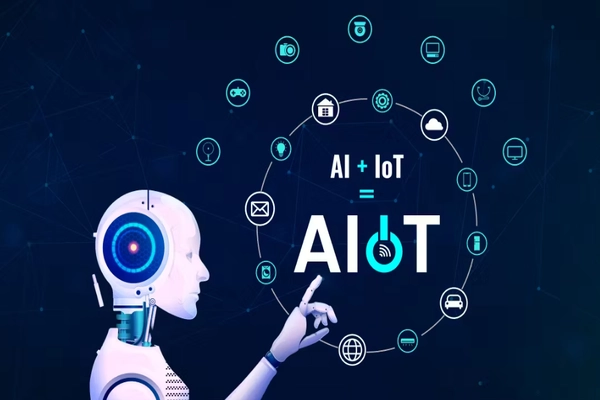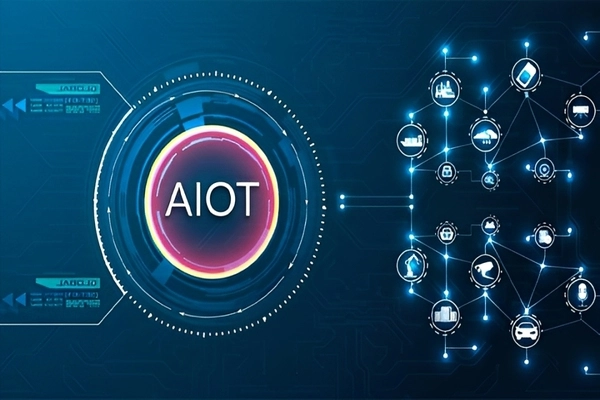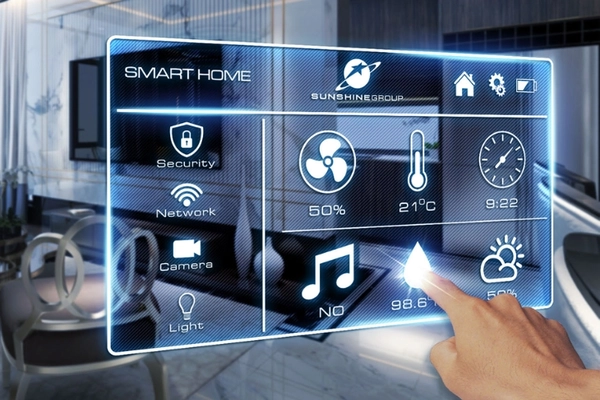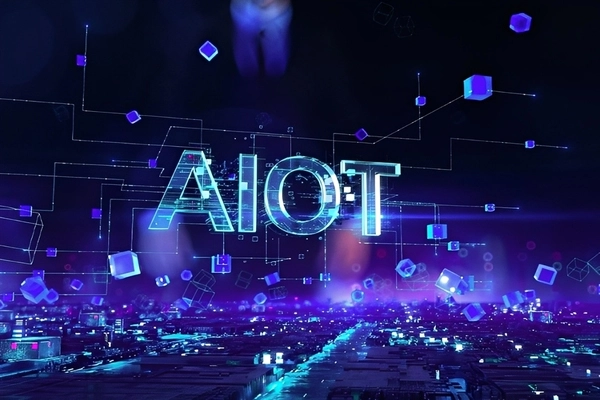In the era of Industry 4.0, Artificial Intelligence of Things (AIoT) ushers in a new age of smart connectivity, where IoT devices not only communicate but also analyze data and make automated decisions. From smart homes, manufacturing, and healthcare to transportation and agriculture, AIoT delivers optimal efficiency, conserves resources, and enhances user experiences, becoming the foundation for intelligent systems of the future.
What is Artificial Intelligence of Things (AIoT)?
In the age of digitalization and continuous connectivity, AIoT has emerged as a key technological trend, combining the power of Artificial Intelligence (AI) with the Internet of Things (IoT). AIoT goes beyond merely connecting smart devices; it analyzes data, learns from user behaviors, and optimizes operations automatically, providing superior efficiency for both businesses and end users.

By integrating AI into IoT devices, AIoT systems can predict, make decisions, and automatically adjust without continuous human intervention, ushering in a new era of intelligent solutions across all sectors.
Structure and Key Components of AIoT Systems
A modern Artificial Intelligence of Things (AIoT) system consists of multiple layers, each playing a crucial role in collecting, transmitting, and processing data to generate intelligent value. Understanding the structure of AIoT enables businesses to implement systems effectively and optimize investment costs. The basic layers include:

Device and Sensor Layer
The device and sensor layer forms the foundation of any AIoT system. Sensors are responsible for collecting data from the environment, such as temperature, humidity, light, motion, or operational parameters in industrial settings. Additionally, IoT devices include cameras, microphones, RFID tags, and other measurement instruments. The quality and accuracy of input data at this layer directly determine the effectiveness of the entire AIoT system.
Network Layer
Data collected from sensors must be transmitted to processing centers. The network layer handles the secure and stable transmission of this data. Common protocols in AIoT include Wi-Fi, 5G, LoRaWAN, Zigbee, and NB-IoT, depending on requirements for speed, bandwidth, and coverage. Choosing the appropriate network ensures that data is delivered accurately, on time, and without loss during transmission.
Data Processing Layer
Once transmitted, the data processing layer aggregates, analyzes, and learns from the incoming information. AI plays a crucial role at this stage through machine learning, deep learning, and other artificial intelligence algorithms. The system can predict failures, classify information, detect abnormal patterns, and automatically make optimal decisions without direct human intervention.
Application Layer
The application layer is where humans interact directly with the AIoT system. User interfaces (UI/UX) may include mobile apps, web dashboards, or automated alert systems. This layer transforms complex data into easily understandable information, enabling users to monitor, control, and make timely decisions. The usability and intuitiveness of the application layer strongly impact the real-world effectiveness of AIoT deployment.
How Artificial Intelligence of Things (AIoT) Systems Work
Artificial Intelligence of Things (AIoT) operates through a sequential yet continuous process: data collection, transmission, analysis, and response. Sensors gather real-time information, the network transmits it to processing systems, AI analyzes and interprets the data, and the system either acts automatically or provides actionable insights to users, creating a seamless and intelligent operational cycle.

- Data Collection: Devices and sensors record environmental parameters, such as temperature, light, humidity, or the status of machinery.
- Data Transmission: The collected data is sent to the processing layer through stable and secure network connections.
- Data Processing and Analysis: AI identifies patterns, predicts trends, and generates alerts or automatic actions based on the analyzed data.
- Response and Application: The system executes actions based on the analysis, such as automatically adjusting devices, sending notifications, or supporting user decision-making.
Example in a Smart Home: A temperature sensor measures the room temperature, sends the data to the cloud, and AI analyzes it to adjust the air conditioning to the ideal temperature. This process occurs continuously, enabling the system to respond quickly, optimize energy usage, and enhance user comfort.
Benefits of Artificial Intelligence of Things (AIoT)
Implementing Artificial Intelligence of Things (AIoT) brings numerous advantages for both businesses and users:
- Operational Optimization: AIoT systems automate processes, minimize human errors, and improve overall operational efficiency.
- Cost Savings: AIoT can predict potential issues, reducing maintenance costs and preventing energy waste.
- Enhanced User Experience: Systems can personalize responses based on data collected from user habits and actual needs.
- Smart Decision-Making: AI continuously analyzes data, providing accurate insights to help users or businesses make timely decisions.
- Increased Adaptability: AIoT systems can learn and adapt to changing environments, improving flexibility and sustainability.
With these benefits, AIoT not only enhances business efficiency but also plays a crucial role in improving quality of life across various sectors, from housing, transportation, and healthcare to agriculture and manufacturing.
Practical Applications of AIoT Across Different Sectors
AIoT has been widely applied across various industries, providing intelligent solutions that were previously unattainable.
Smart Home
In smart homes, Artificial Intelligence of Things (AIoT) helps automate household devices such as air conditioners, lighting, cameras, smart doors, and security systems. The system can learn the habits of family members, predict their needs, optimize energy usage, and enhance comfort and safety. For example, the system can automatically turn off lights when no one is in the room or adjust the temperature according to the time of day.

Smart Manufacturing
In manufacturing, AIoT helps monitor production lines, predict maintenance needs, and optimize processes. Sensors collect data from machinery, and AI analyzes it to detect abnormal signs and issue alerts before failures occur. This reduces downtime, increases productivity, and improves product quality.
Smart Healthcare
In healthcare, AIoT supports patient health monitoring through wearable devices, biosensors, and surveillance cameras. The system can detect early warning signs, assist in diagnosis, and personalize treatment plans. Additionally, Artificial Intelligence of Things (AIoT) helps manage electronic medical records, optimize appointment scheduling, and enhance the overall patient experience.

Smart Transportation
In transportation, AIoT helps monitor and manage traffic flow, predict road conditions, control traffic signals, and optimize routes. Road and vehicle sensors combined with AI reduce congestion, enhance safety, and save fuel. For example, the system can predict traffic jams and suggest alternative routes for drivers.
Smart Agriculture
AIoT supports smart agriculture by monitoring the growing environment and adjusting water, fertilizers, and pesticides based on real-time data. The system increases productivity, reduces costs, minimizes environmental impact, and improves crop quality. For instance, soil moisture sensors combined with AI can automatically activate irrigation systems when needed, saving water and reducing waste.
Challenges in Implementing AIoT
Despite its many benefits, AIoT faces several challenges during implementation:
- High Initial Investment: Sensors, network systems, and AI software require significant capital.
- Security and Privacy: Personal and business data are at risk of breaches or leaks.
- Compatibility and Standardization: Diverse devices and protocols create difficulties in system integration.
- Big Data Processing Capabilities: AIoT generates massive amounts of data, requiring robust infrastructure for storage and processing.
- Lack of Skilled Workforce: Operating AIoT systems demands engineers experienced in AI and IoT technologies.
To overcome these challenges, businesses need a detailed implementation plan, select reputable technology partners, and invest in security measures and staff training.
Trends and Future of Artificial Intelligence of Things (AIoT)
In the future, AIoT will continue to evolve through the combination of advanced AI, 5G/6G networks, edge computing, and cloud computing. AIoT systems will become more autonomous, flexible, and personalized, expanding their applications across smart cities, logistics, energy, education, and entertainment sectors.

AIoT will become a key pillar of the Industry 4.0 revolution, enabling society to operate more efficiently, sustainably, and intelligently. Advances in AIoT promise comprehensive connectivity, smart prediction, and optimized automation, creating revolutionary solutions for businesses and everyday life.
Artificial Intelligence of Things (AIoT) is shaping how people live and work, from automating processes to managing data intelligently. With its capabilities in connectivity, analysis, and prediction, AIoT not only enhances operational efficiency but also opens up extensive applications across various sectors. It is the core technology driving the world toward a smarter and more sustainable future.
